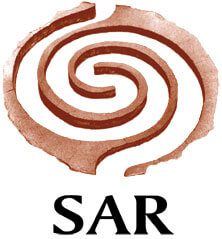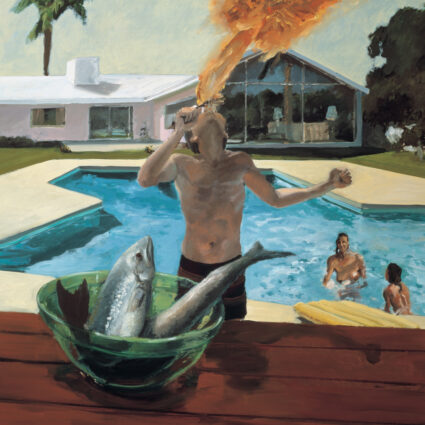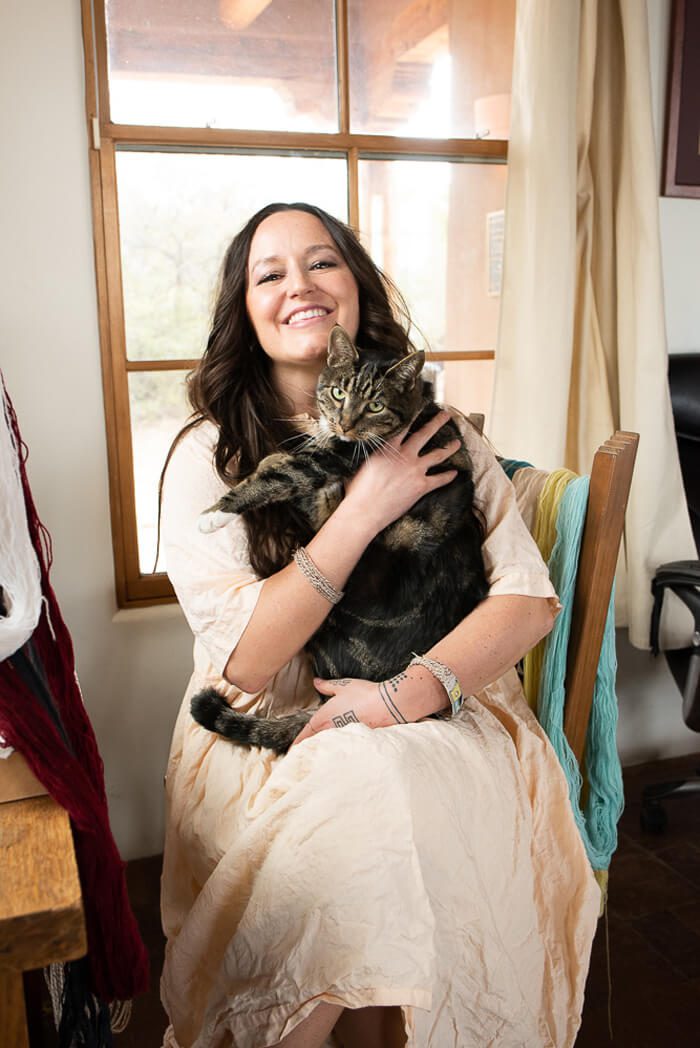
Haida, Kwakwaka’wakw Chilkat weaver Meghann O’Brien is the 2019 Eric and Barbara Dobkin Native Artist Fellow. An accomplished textile and basket weaver, O’Brien honors the wearability of garments both within and outside of her culture. While at SAR, O’Brien has been making an intricately woven necklace in the Chilkat tradition, depicting the Dogfish Mother of the Haida. I caught up with her in advance of her artist talk and open studio on May 16 to learn more about her work and process.
When did you first begin weaving?
I started in 2007, while working on my dad’s commercial seine fishing boat in northern British Columbia. My desire to start weaving baskets came after years of spending time harvesting food on the land. I spent my spare time picking berries, and—out of respect for them and a total inspiration that my role in an ecosystem could connect different plants, especially ones that had such a strong history with Northwest Coast people and societies—I started weaving and discovered something totally beautiful and unexpected.
Why did you first become interested in clothing and clothing design?
I’ve been interested in fashion since I was super young, probably since I was, like, three and loved playing dress up. During elementary and junior high school, I bought all the issues of Vogue and Harper’s Bazaar magazines and made collages, etc. And always had this tendency to use things in ways they weren’t meant to be. My dad liked telling a story of when I was five and he took me on my first trip to Vancouver. In the department store, I found this woman’s black and gold sequin tube top, and the sales lady was like, “Little girl, you can’t wear that,” and I was like, “Oh yeah, I can,” and wore it as a mini skirt.
More recently, I’ve been interested in how to see the ceremonial regalia traditions [in] the weaving I do transform into something that can be used in a respectful way today. In a way that the spirit of the materials and integrity of the techniques are maintained but can be used outside of our culture. Because the reality is that most art collectors who support Indigenous art aren’t from our culture. To me it is much more desirable to see it become aligned with the world of haute couture, which carries such a strong element of tradition, and be uplifted as a status symbol in contemporary times. Undergirding most of my interest is a desire to have a relationship with the things in my own life, a return to a kind of sacred functionality. There’s this interesting concept someone introduced me to, and it was that Kant said [that] it isn’t art if it has a function. My argument is that even if something doesn’t have a functional purpose, it still does have a function. It might be more intangible or ego-driven, but it is still serving a purpose in someone’s life.
I view my creative process as a kind of meditation, and through that also see it as a form of re-educating myself from a Western mindset and view of time.
Talk to me about time in your work and your creative process.
Naaxiin [regalia weaving] has always been incredibly labor-intensive. Traditionally, the most expert skilled weavers would spend one year to spin and weave a single Chief’s robe, and today, without even having to spin all of our weft, it still takes most weavers two years. For me now, I still harvest the cedar bark for use in Chilkat or Naaxiin weaving, which is thigh-spun with wool to create the warp. There is a lot of depth and beauty in the process of making or working with the materials to transform them, and there is an element of transformation that occurs for the one doing the work as well. I view my creative process as a kind of meditation, and through that also see it as a form of re-educating myself from a Western mindset and view of time. I’m incredibly inspired by the natural world, and this work has been a way to dive quite deeply into that.
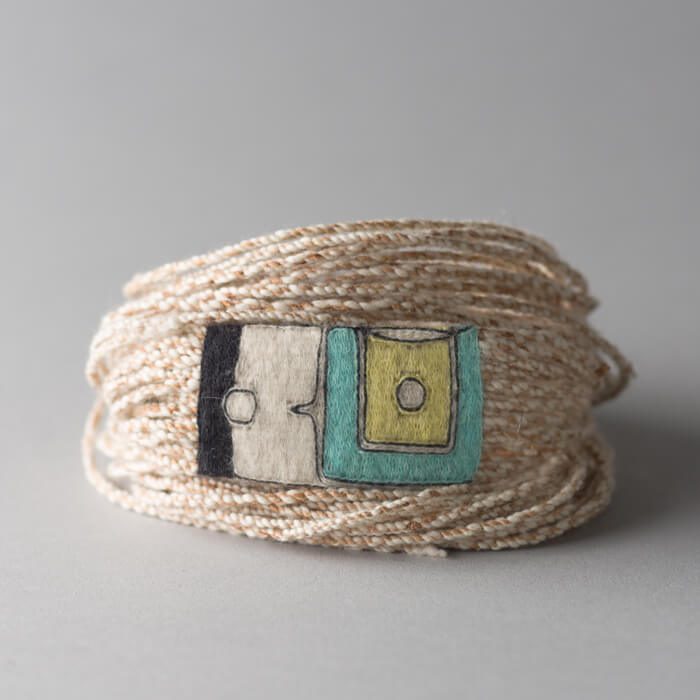
What designers or current aspects of fashion culture inspire you? What frustrates you?
I’m inspired by the “making-of” videos made by Chanel; to me those are the only places that work of that quality is still created to be used. Just the level of beadwork, the Lesage weaving, plumiers, etc. It’s art, and in a way similar to older Indigenous techniques. Another designer I am extremely in love with is an Italian designer named Daniela Gregis. She works more exclusively with natural materials and has this respect for tradition, yet a very avant-garde approach to clothing. It’s like clothing that isn’t over the top but has little things made for the person wearing it. I also love the many labels of Rei Kawakubo and Comme Des Garçons. For Indigenous designers, I love the work of Warren Steven Scott, and it’s great to see his earring line take off, and I can’t wait ‘til his clothing is available! What frustrates me the most about things is fast fashion and disposability, and the worst is seeing Indigenous people create brands where it’s following in that destructive and toxic system of being made in developing countries and sold for very cheap. To me that’s just turning our sacred art into something that is a trend and can be easily consumed and disposed of, like so much of the world already is in the West.
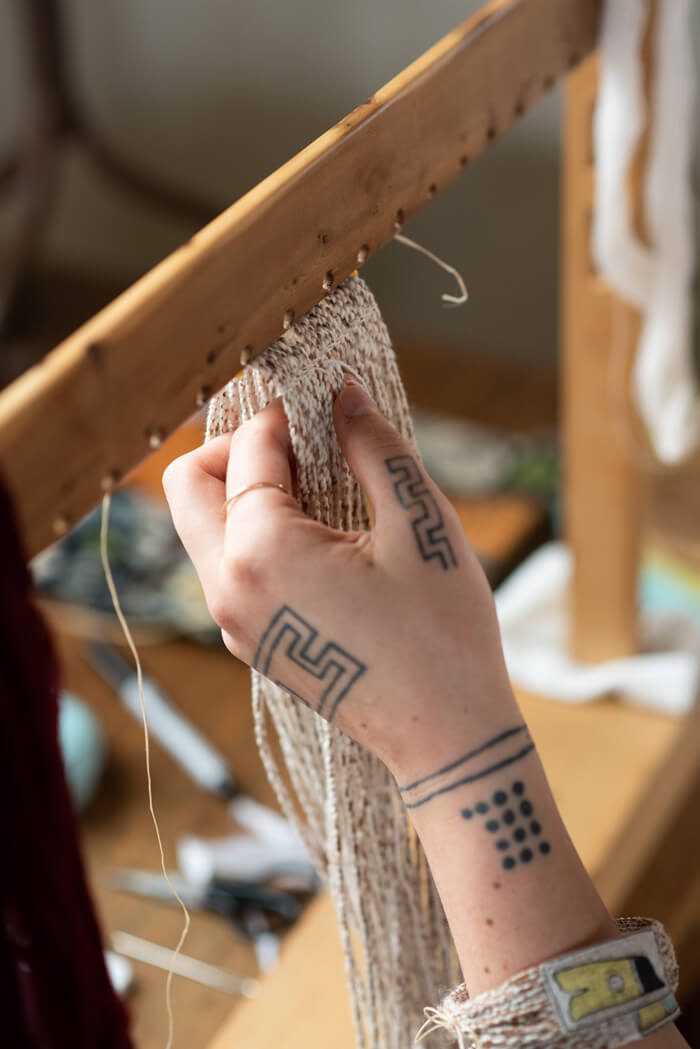
What are you hopeful for in the world of textiles and wearable garments?
I’d like to see natural fibers, the plants they come from, and the weaving process more understood and appreciated. In Western capitalist society, we are so disconnected from everything that comes into a city. It can be such an enlightening process and give so much more joy to understand the things we have in our lives.
